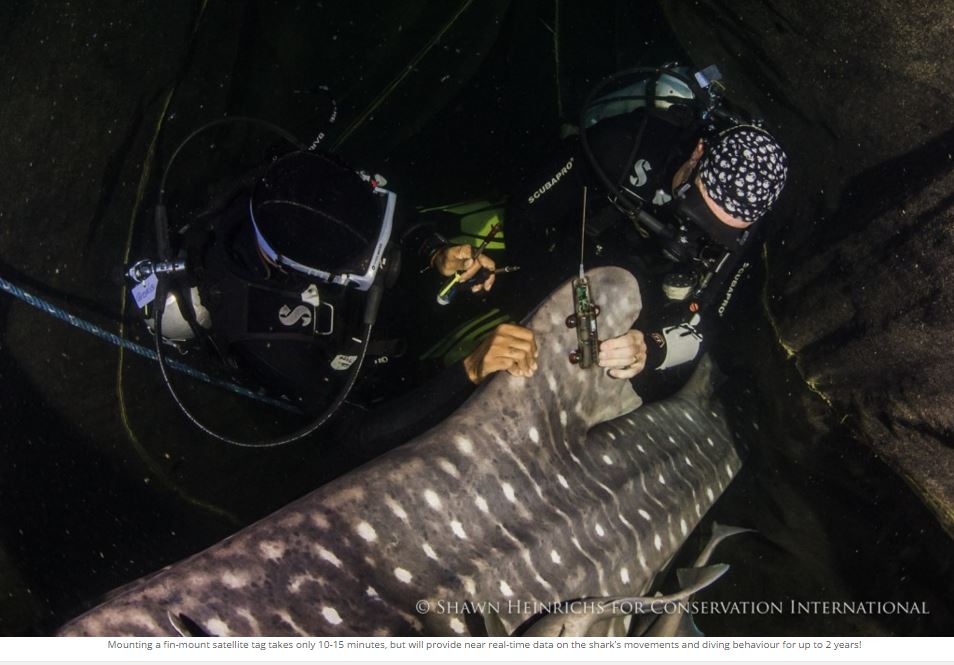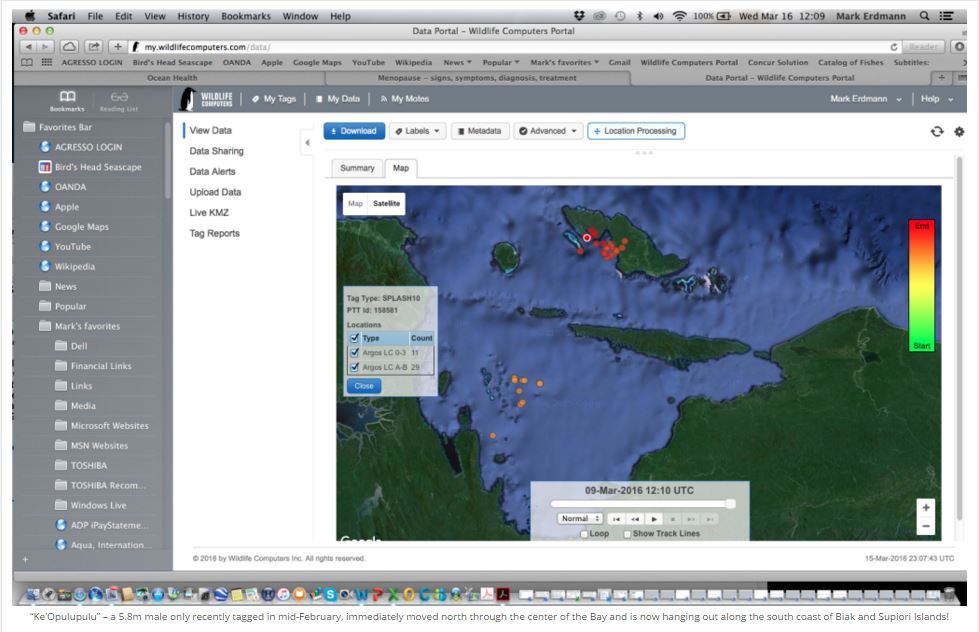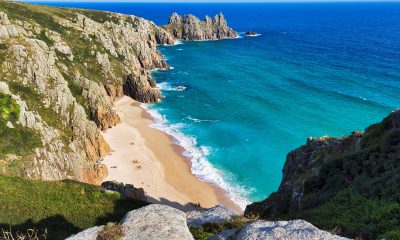News
Cendrawasih’s whale sharks…. not such homebodies after all

For the past five years, Cendrawasih Bay’s friendly whale shark population has been attracting a lot of attention, primarily because of the near-certainty of having outstanding (and lengthy!) whale shark encounters during a visit to the region. Unlike many of the other known whale shark aggregations in the world (such as Ningaloo, Isla Mujeres, Belize, Galapagos and Donsol), which are highly seasonal, we now know with certainty that Cendrawasih has whale sharks present in the bay year round. Indeed, based on our observations combined with photos submitted by visitors to our BHS whale shark database, some highly-recognizeable individuals seem to be present throughout the year. Of course, one of the surest ways to confirm this is to monitor individual animals’ movements through satellite tagging – which is exactly what we’ve been doing in collaboration with the Cendrawasih Bay National Park Authority and Pak Bram Maruanaya and his local Kalilemon homestay in Kwatisore.
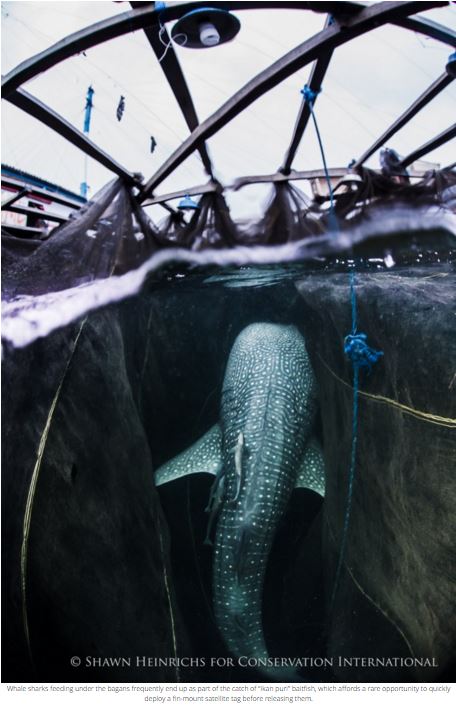 Since June 2015, we’ve been able to tag 15 male whale sharks (ranging in size from 3 to 7 m in length) from Cendrawasih, using custom-made fin-mounted satellite tags by Wildlife Computers. These fin-mount tags have extended battery life which we hope will provide data for up to two years, and we’ve been delighted with their performance to date. All but one of the tags has been transmitting data very regularly (on average every 2-5 days) – basically each time one of the tagged sharks spends enough time on the surface for the tag to uplink to the ARGOS satellite network.
Since June 2015, we’ve been able to tag 15 male whale sharks (ranging in size from 3 to 7 m in length) from Cendrawasih, using custom-made fin-mounted satellite tags by Wildlife Computers. These fin-mount tags have extended battery life which we hope will provide data for up to two years, and we’ve been delighted with their performance to date. All but one of the tags has been transmitting data very regularly (on average every 2-5 days) – basically each time one of the tagged sharks spends enough time on the surface for the tag to uplink to the ARGOS satellite network.
As previously reported back in November, the initial data received from June through October 2015 seemed to confirm what many suspected – that Cendrawasih whale sharks are largely “homebodies”, preferring to stay close to shore and feed upon the abundant ikan puri baitfish schools that abound in the coastal bays and estuarine areas of the southern and eastern coastlines of Cendrawasih. Which of course is a great thing for BHS marine tourism, as it means visitors can pretty much plan a trip any time of the year and have a very good chance of excellent whale shark interactions.
By December, however, we started to observe some very different behaviours that indicate Cendrawasih’s whale sharks might not be such homebodies after all! Just before Christmas, four of the sharks almost simultaneously moved towards the small exit to the bay between the eastern tip of Yapen Island and the Papuan mainland. Though two soon turned back, both “Jude” and “Wally” proceeded down the coastline towards Jayapura. Jude eventually turned back and returned to Kwatisore, but Wally continued down the coast – becoming the first of our tagged sharks to become an international visitor when he crossed into PNG waters in early January. While he appeared at one point to be returning to Cendrawasih (making it as far west as Jayapura), he’s since returned to the Wewak region of PNG (near the Sepik River outlet) and seems to be happily enjoying an extended vacation there!
Similarly, one of our most recently tagged whale sharks, Ke’Opulupulu, headed almost immediately north into the center of the Bay (near the Auri Islands and atolls), then navigated to the south coast of Biak and Supiori Islands, where he’s remained for the past few weeks.
But horizontal movements are only part of the excitement we’ve recently recorded. The past 3 months have also seen a dramatic increase in deep-diving behaviour of many of our tagged sharks. While we did previously report a 672m deep diving record in October, we’ve now seen four of our sharks venture below 1000m depth, with the aptly-named “Moby” smashing the depth record (but fortunately not his tag’s depth gauge!) at 1416m!!! Even the “wee” 3m “Fijubeca” has dived to 700m depth. It’s still not clear why the sharks have shown such deep diving behaviour over the past few months – perhaps the El-Nino warmed surface waters are not providing enough food and they are searching for deeper plankton…
Overall, we’re delighted to see these fin-mount tags proving so successful at divulging some of the secrets of Cendrawasih’s whale sharks. Its particularly noteworthy that the first 5 months’ of data seemed to simply confirm our scattered direct observations, but the past 4 months have revealed numerous exciting behaviours we didn’t expect. Who knows what the next few months’ data might reveal? Stay tuned and we’ll happily report back as the data keeps flowing in. And please remember – you too can contribute to our expanding knowledge and understanding of the charismatic megafauna of the Bird’s Head by contributing your photo IDs and observations of whale sharks and manta rays in the region to the databases maintained by our site.
Mark Erdmann is Conservation International’s Vice President of Asia Pacific Marine Programs. Though now based in New Zealand after 23 years in Indonesia, he is still intimately involved with the Bird’s Head Seascape and frequently disappears into its remote corners for weeks on end….
Shawn Heinrichs is an Emmy Award-winning cinematographer, photographer and marine conservationist. An independent filmmaker, he is the founder of Blue Sphere Media, a production company specializing in underwater, adventure and conservation media. His work was recently featured in the film Racing Extinction.
A special thanks to Audrey, Shannon and Dennis Wong, Sally Timpson, and the management and guests of the True North expedition vessel for generously sponsoring the fin-mount whale shark satellite tags reported here, to Patti Seery and her amazing staff and crew of the Si Datu Buah liveaboard for hosting our most recent deployment expedition, and to OceanMax for continuing to support the tagging program with PropSpeed silicone foul-release coating for our satellite tags.
Blogs
TRAVEL BLOG: Jeff Goodman Dives SOMABAY, Part 2
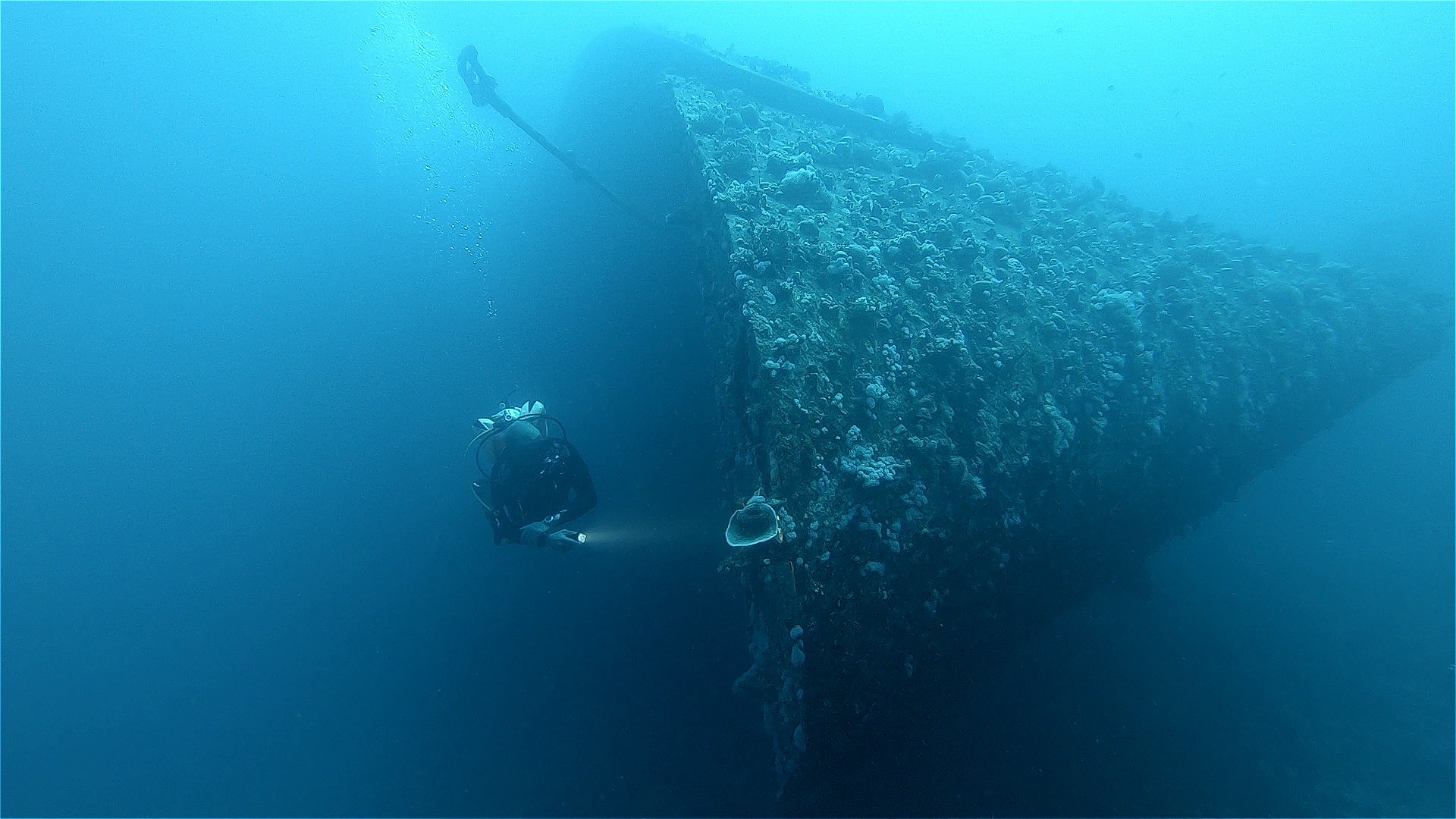
Day three of my trip to Somabay and we were spending the day on the Lady Christina and diving on the wreck of the Salem Express.
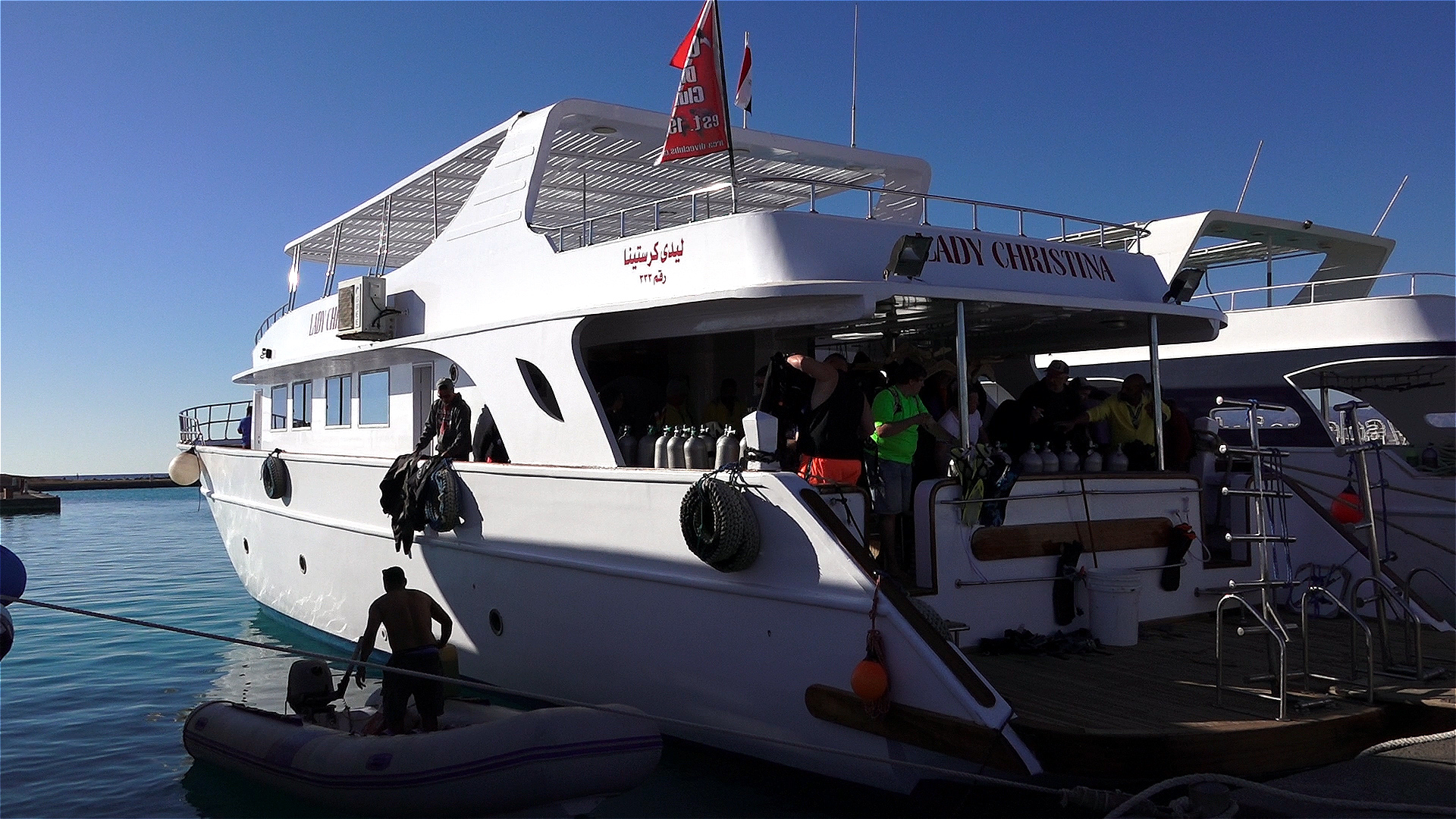
Diving wrecks for me is always one of mixed emotions. The excitement of diving a wreck is more than often tempered by the thought of loss of life when she sank. The Salem Express was a passenger ship and a roll-on/roll-off ferry travelling from Jeddah, Saudi Arabia to Safaga, Egypt. Most passengers were of poor class travelling home from their holidays while around 150 people were returning home from their pilgrimage to Mecca.

The ship struck a reef and sank within 20 minutes. Passengers were trapped below deck and the ship was filled with fear and panic.
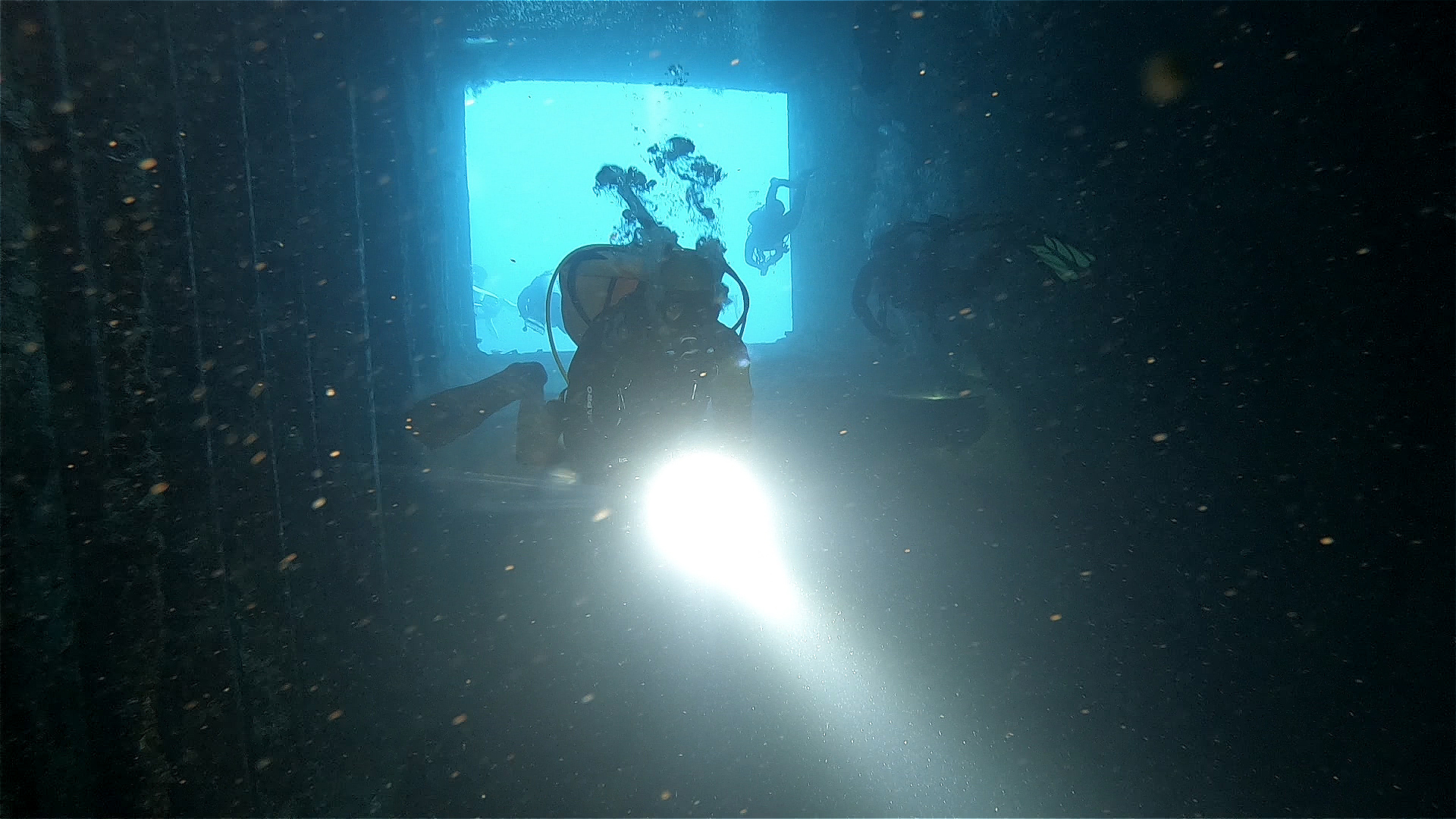
The wreck area is strewn with personal belongings from the crew and passengers such as a transistor radio and a flat iron for clothes. A diver at sometime has put them in a prominent place to be seen.

Tragically only one life boat was launched while the others went down with the ship. More than 600 men, women and children lost their lives here.
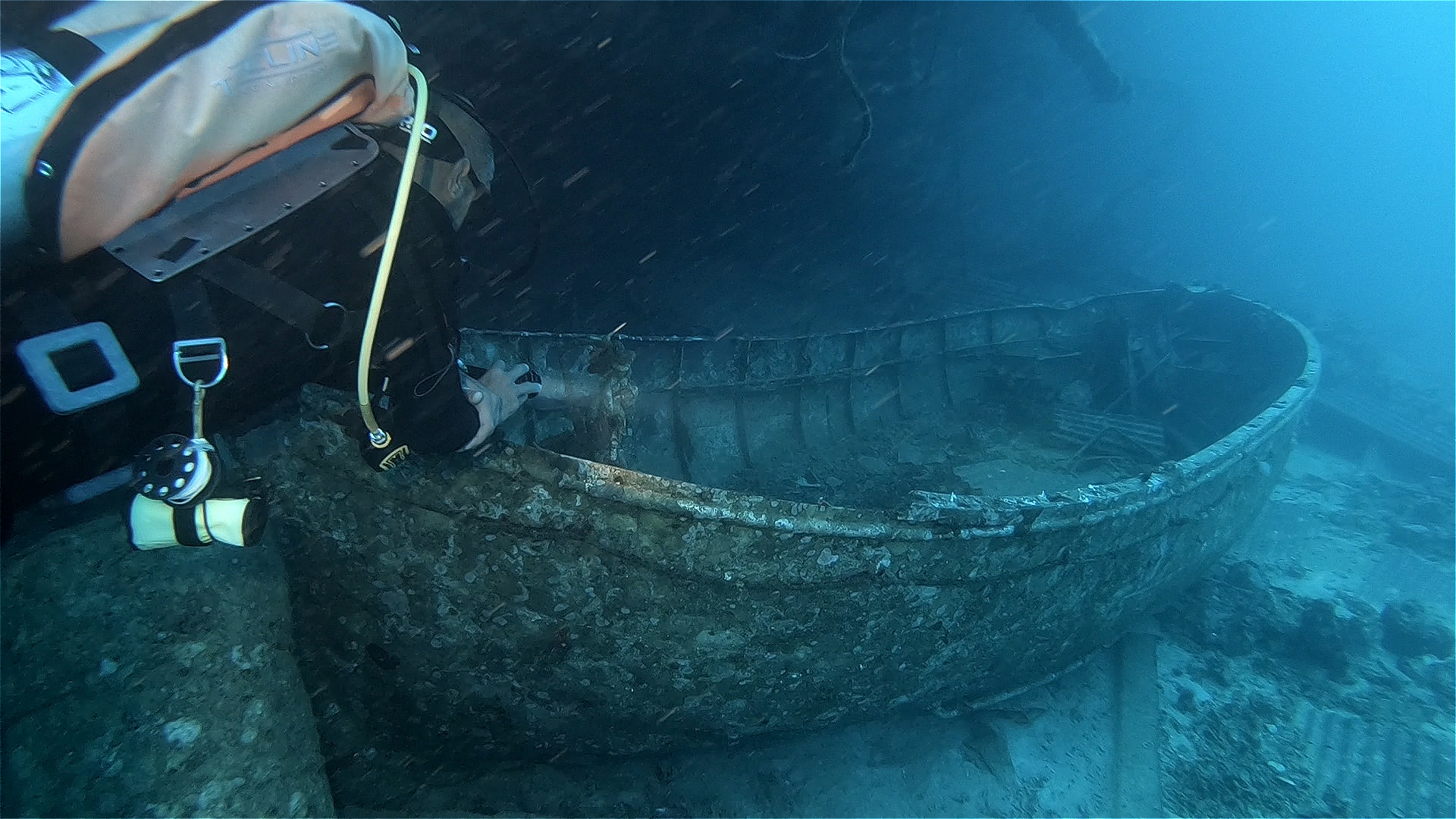
It’s a stark reminder that the sea can be unforgiving and so when we dive on such wrecks we should do so with humble regard.
Returning to the surface, shoals of fish are gathered under our boat and seem to be welcoming us back into the light.
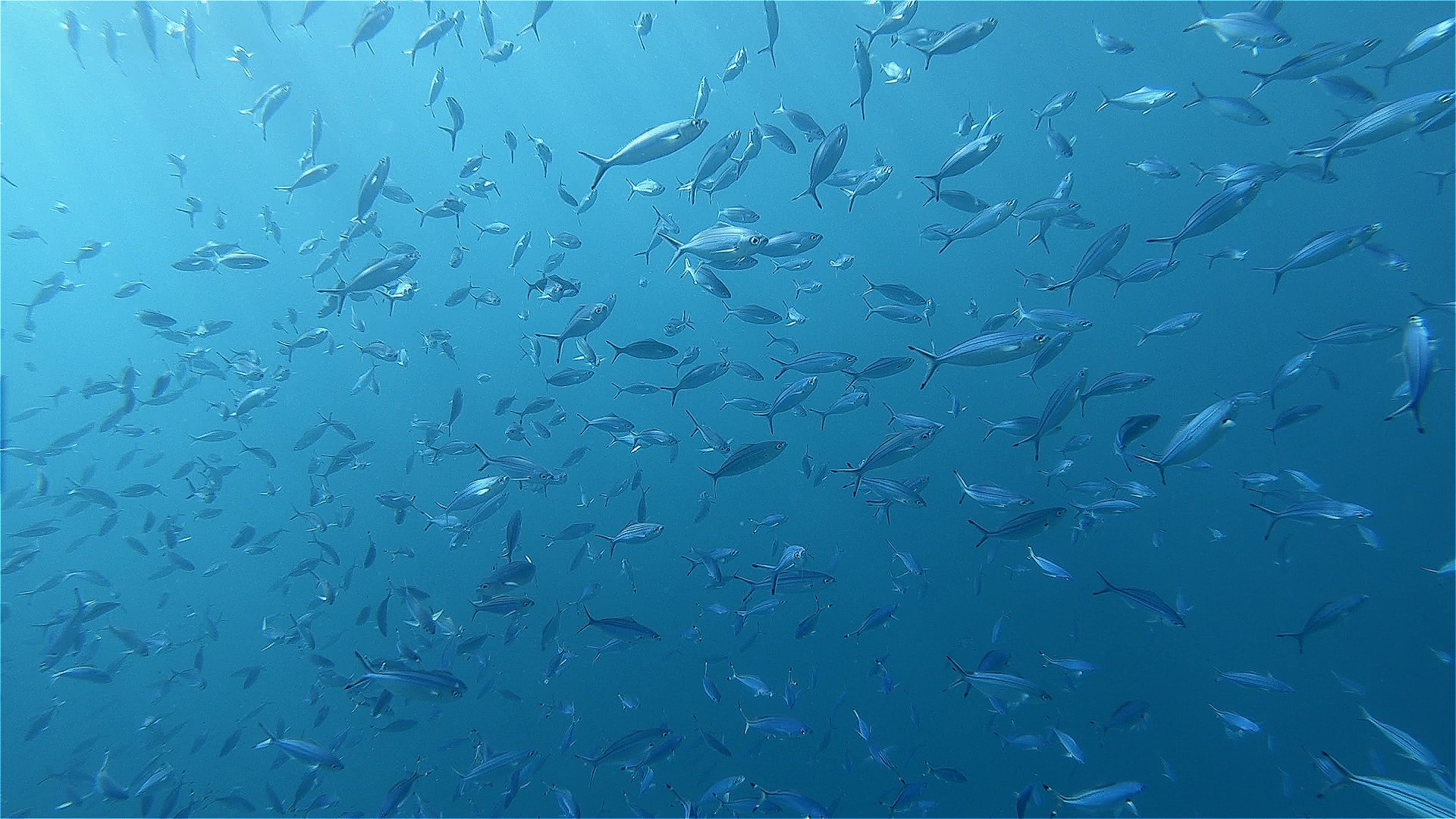
Back at the Breakers I sat in the dining area with a beer and a very good meal while my thoughts still remained with the day’s dive on the Salem Express.
Check in for part 3 tomorrow for Jeff’s last day of diving with Somabay on the off-shore reefs looking for turtles.
Book your next Red Sea dive adventure with SOMABAY! For more information, visit www.somabay.com.
Stay at the Breakers Diving & Surfing Lodge when you visit! For more information, visit www.thebreakers-somabay.com.
Find out more about ORCA Dive Clubs at SOMABAY at www.orca-diveclubs.com/en/soma-bay-en.
Blogs
TRAVEL BLOG: Jeff Goodman Dives SOMABAY, Part 1
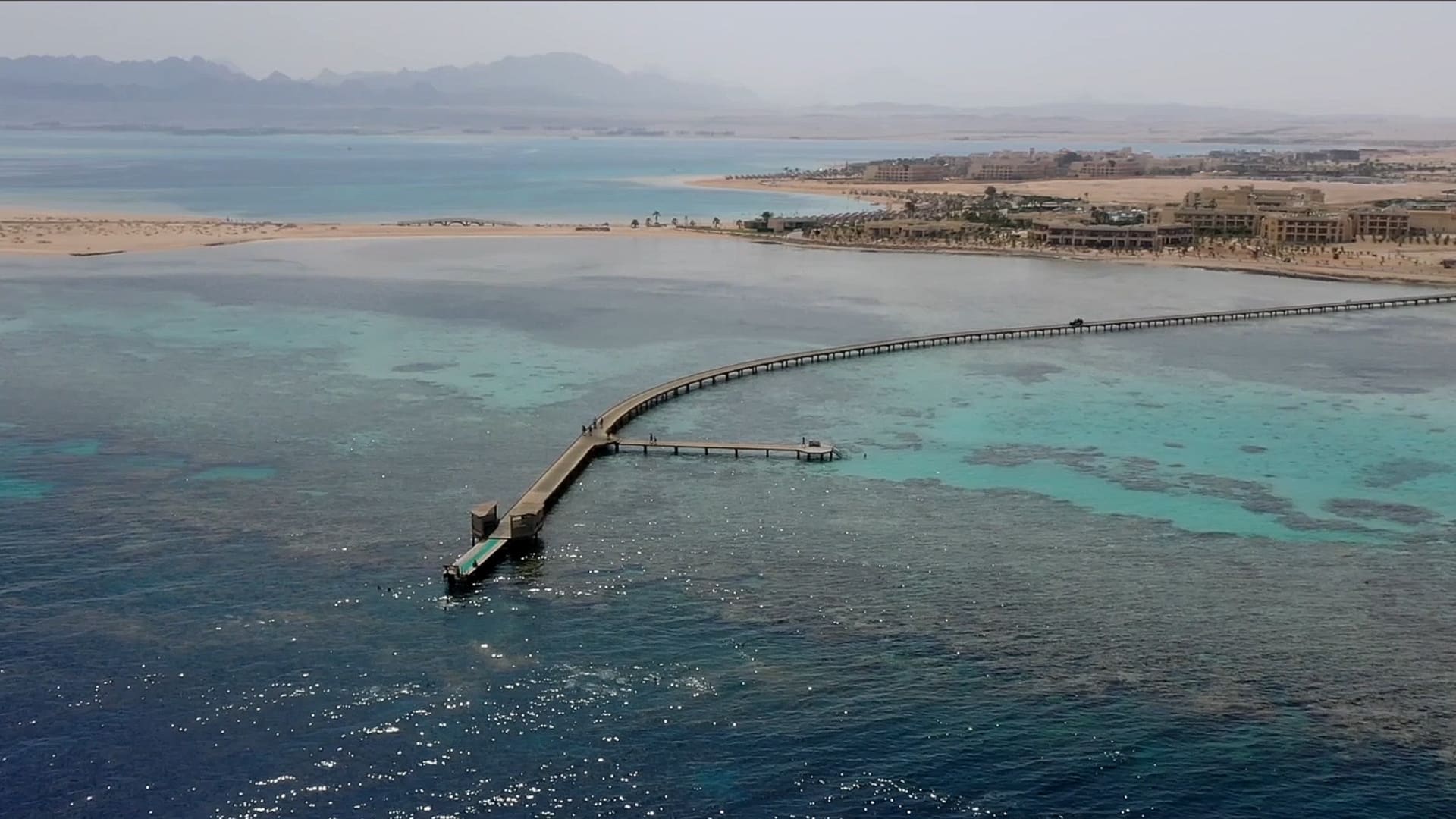
For a week at the end of February I was invited to sample the diving with Orca Dive Club based at the Breakers Diving and Surfing Lodge by courtesy of SOMABAY.
Somabay covers an entire peninsula and is home to several resorts as well as residential compounds. Somabay caters for scuba diving as well as many other sports, including windsurfing, golf, sailing, go-carting, horse riding and many other activities.
All the activities are of a world-class standard and any or all of these can be booked directly from The Breakers.

I took Easyjet from Bristol (UK) to Hurghada. Easyjet are not by any means my favourite airline but the flight was cheap and direct (except for the surprise extra £48 I was charged at the gate for my carry-on bag).
I was met at Hurghada airport by a driver and car and taken to the Breakers 28 miles (45Kilomaters) south along the coast. Once at the hotel I was too late for an evening meal and so a basic meal was delivered to my room. That and a beer from the fridge and I was fast asleep.
Early the next morning after breakfast I arrived for my rep meeting at the Orca Dive Center for 8.00am. I was immediately made to feel welcome, and after brief introductions I got some dive gear from the store, had a chat with my dive guide Mohamed and got ready to try the house reef situated at the end of a very long wooded pier where all diving gear and divers are taken out by buggies.
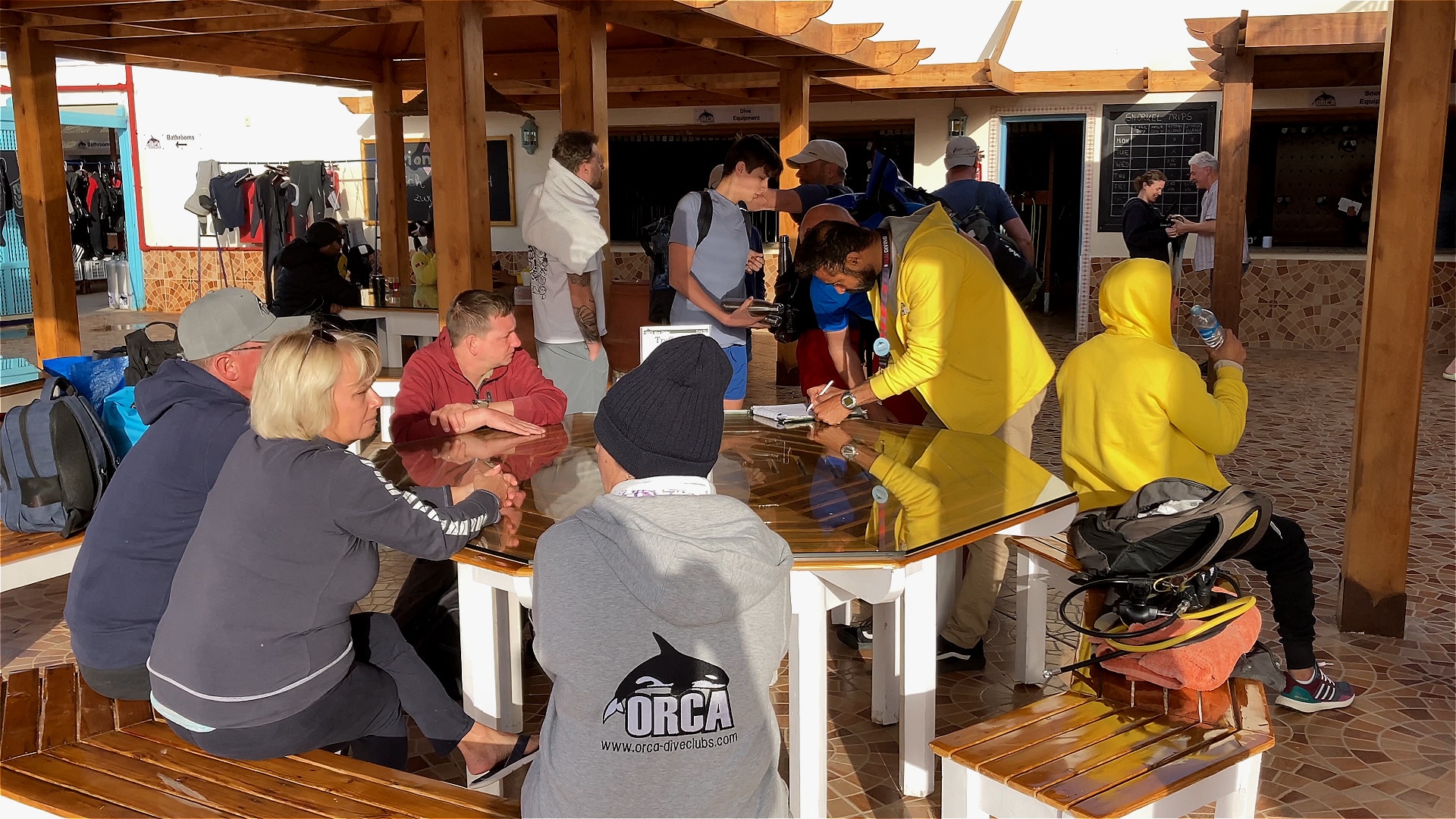
Once at the end of the pier, a helping hand from staff makes sure your gear is set and then it’s a short walk to the very end where you can either climb down a ladder of simply jump in the water next to the reef. The house reef extends both north and south giving a very easy and safe dive with plenty to see. At this time of the year the water temperature was a constant 22 degrees Centigrade and there was little or no current, so there were no issues in swimming back to the pier.
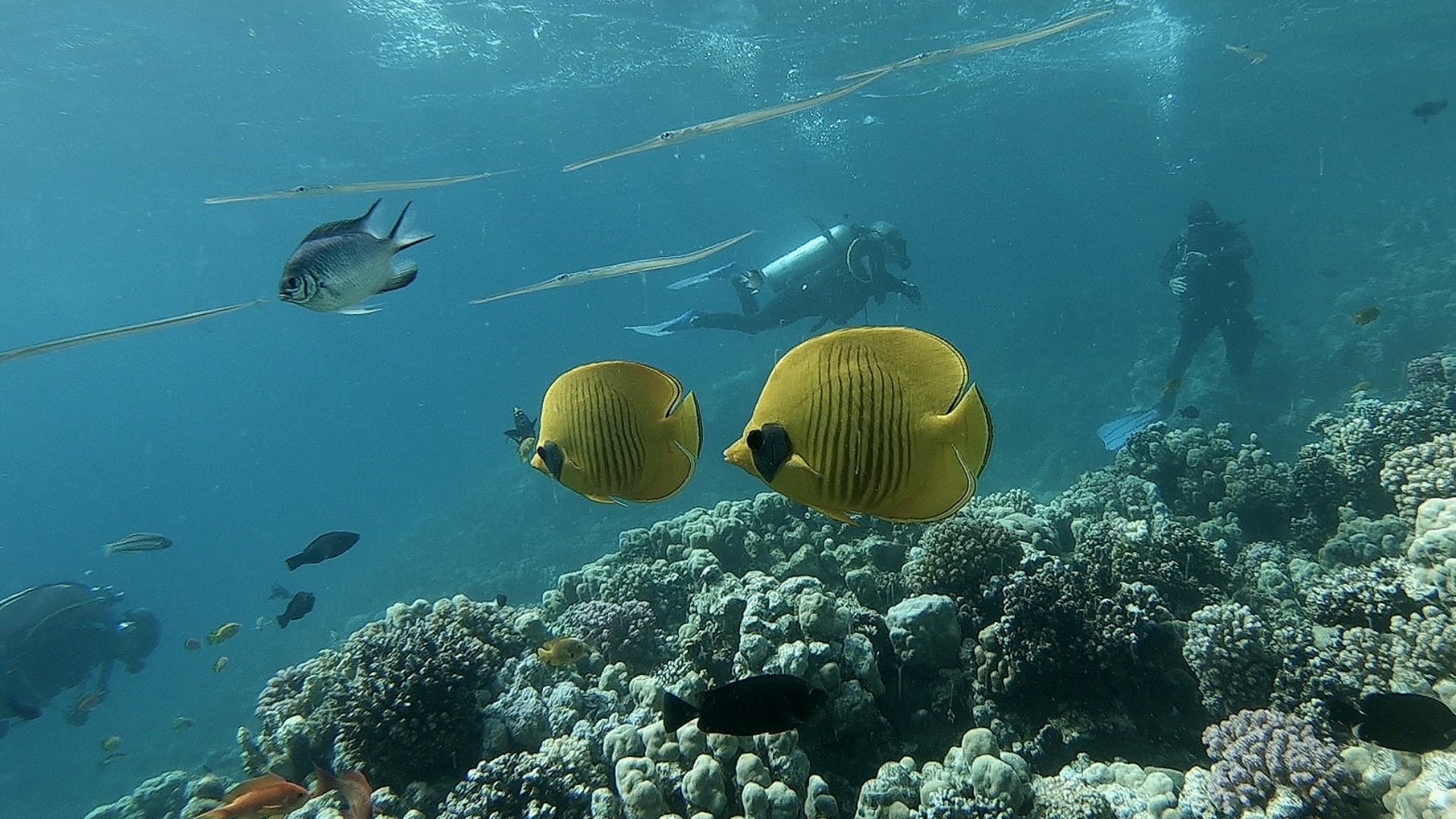
Quite a few divers were in dry or semi-dry suits, but being from the UK and used to the cold I found a 3mm wetsuit with a 3mm neoprene vest quite comfortable. Even after 50 years of diving I still find that first dive of a trip slightly nerving until I am actually underwater and then all becomes relaxed and I ease into auto diving mode. There was plenty to see with many of the Red Sea favourites along the way.
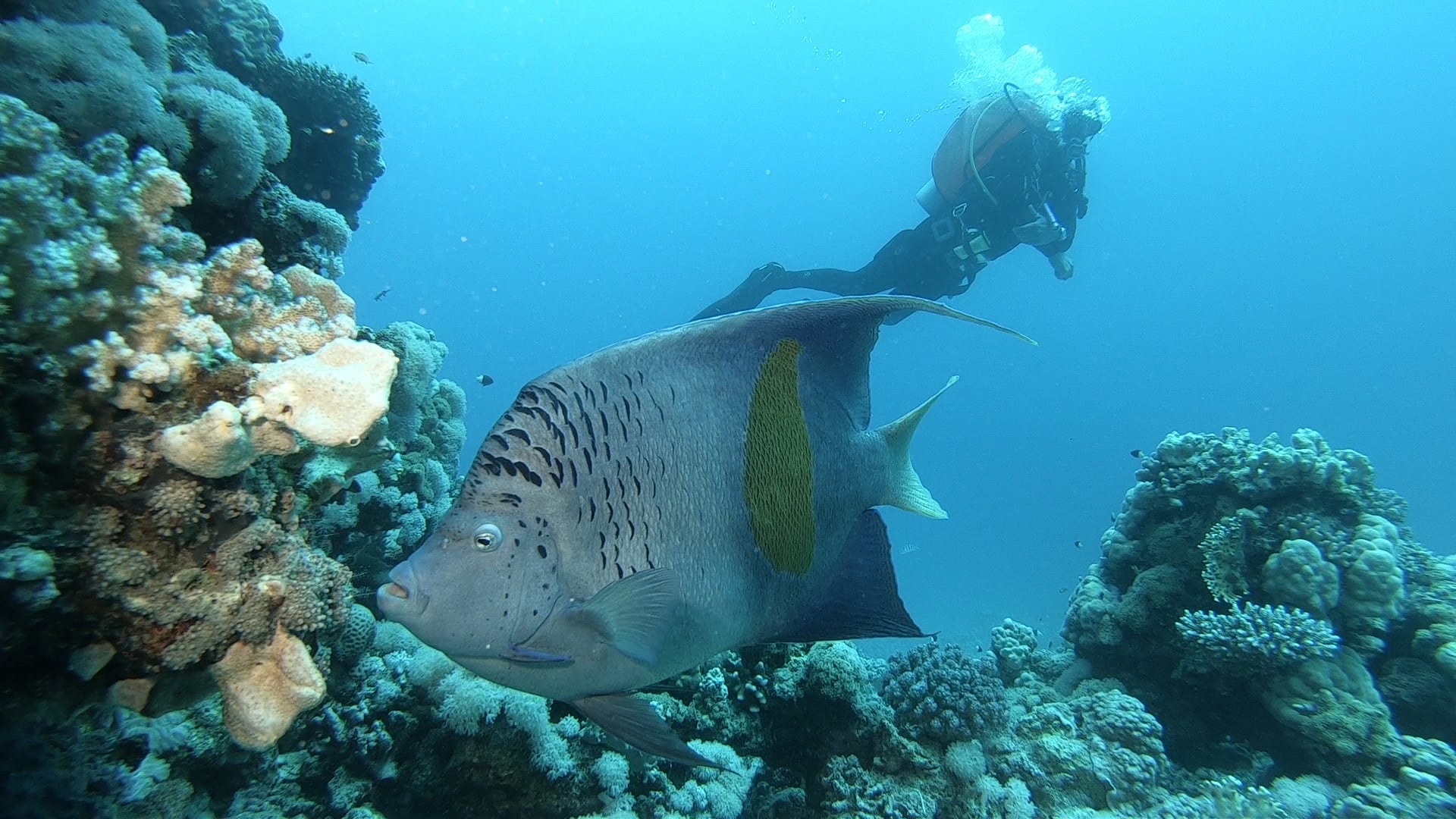
After the dive and a buggy ride back to the hotel for a very good buffet lunch I was back in the water, once again on the house reef for an afternoon dive.

Check in for part 2 tomorrow when Jeff gets on a day boat and dives a few of the off-shore reefs.
Book your next Red Sea dive adventure with SOMABAY! For more information, visit www.somabay.com.
Stay at the Breakers Diving & Surfing Lodge when you visit! For more information, visit www.thebreakers-somabay.com.
Find out more about ORCA Dive Clubs at SOMABAY at www.orca-diveclubs.com/en/soma-bay-en.
-

 News3 months ago
News3 months agoHone your underwater photography skills with Alphamarine Photography at Red Sea Diving Safari in March
-

 News2 months ago
News2 months agoCapturing Critters in Lembeh Underwater Photography Workshop 2024: Event Roundup
-

 Marine Life & Conservation Blogs2 months ago
Marine Life & Conservation Blogs2 months agoCreature Feature: Swell Sharks
-

 Blogs1 month ago
Blogs1 month agoMurex Resorts: Passport to Paradise!
-

 Gear News3 months ago
Gear News3 months agoBare X-Mission Drysuit: Ideal for Both Technical and Recreational Divers
-

 Blogs2 months ago
Blogs2 months agoDiver Discovering Whale Skeletons Beneath Ice Judged World’s Best Underwater Photograph
-

 Gear Reviews2 months ago
Gear Reviews2 months agoGear Review: Oceanic+ Dive Housing for iPhone
-

 Blogs3 months ago
Blogs3 months agoThe Thrilling Encounter with Tiger Sharks at Beqa Lagoon’s ‘The Colosseum’ with Coral Coast Divers



